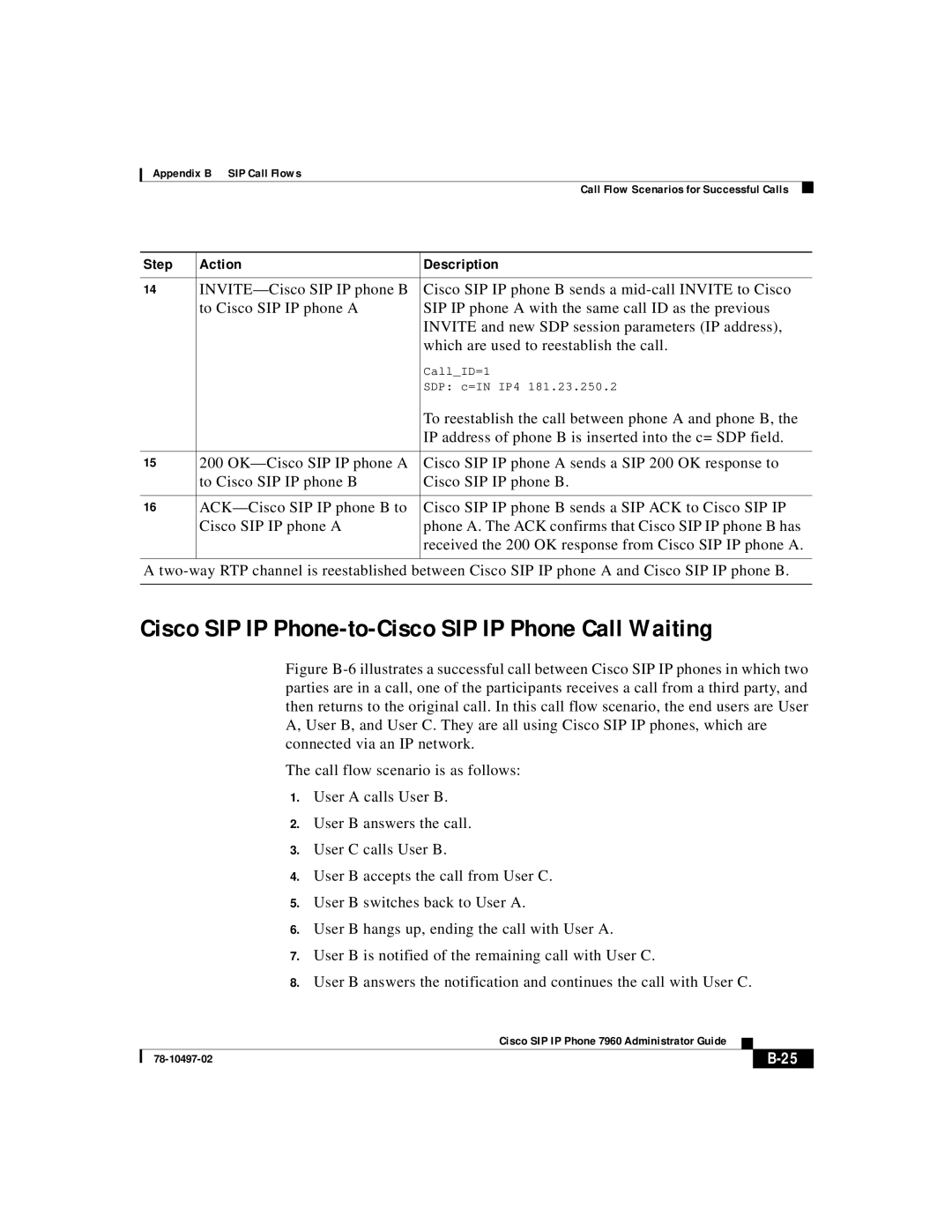
Appendix B SIP Call Flows
|
| Call Flow Scenarios for Successful Calls |
|
|
|
| |
Step | Action | Description | |
|
|
| |
14 | Cisco SIP IP phone B sends a | ||
| to Cisco SIP IP phone A | SIP IP phone A with the same call ID as the previous | |
|
| INVITE and new SDP session parameters (IP address), | |
|
| which are used to reestablish the call. | |
|
| Call_ID=1 | |
|
| SDP: c=IN IP4 181.23.250.2 | |
|
| To reestablish the call between phone A and phone B, the | |
|
| IP address of phone B is inserted into the c= SDP field. | |
|
|
| |
15 | 200 | Cisco SIP IP phone A sends a SIP 200 OK response to | |
| to Cisco SIP IP phone B | Cisco SIP IP phone B. | |
|
|
| |
16 | Cisco SIP IP phone B sends a SIP ACK to Cisco SIP IP | ||
| Cisco SIP IP phone A | phone A. The ACK confirms that Cisco SIP IP phone B has | |
|
| received the 200 OK response from Cisco SIP IP phone A. | |
|
|
|
|
A
Cisco SIP IP Phone-to-Cisco SIP IP Phone Call Waiting
Figure B-6 illustrates a successful call between Cisco SIP IP phones in which two parties are in a call, one of the participants receives a call from a third party, and then returns to the original call. In this call flow scenario, the end users are User A, User B, and User C. They are all using Cisco SIP IP phones, which are connected via an IP network.
The call flow scenario is as follows:
1.User A calls User B.
2.User B answers the call.
3.User C calls User B.
4.User B accepts the call from User C.
5.User B switches back to User A.
6.User B hangs up, ending the call with User A.
7.User B is notified of the remaining call with User C.
8.User B answers the notification and continues the call with User C.
|
| Cisco SIP IP Phone 7960 Administrator Guide |
|
|
|
|
| ||
|
|
|
| |
|
|
|
